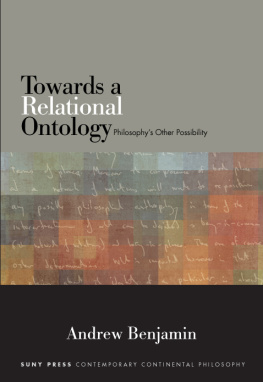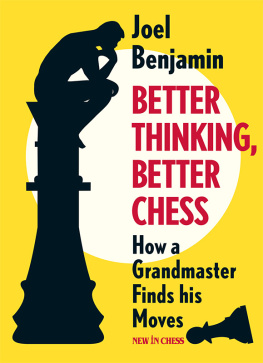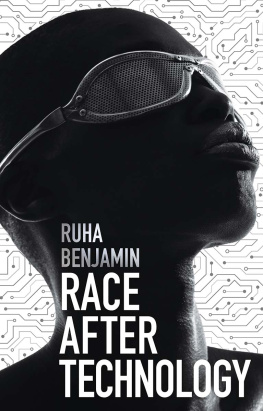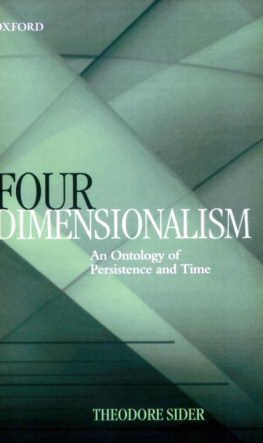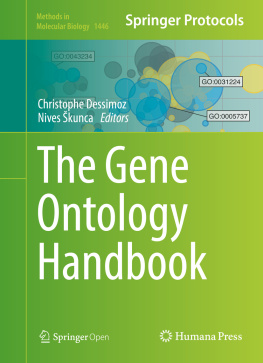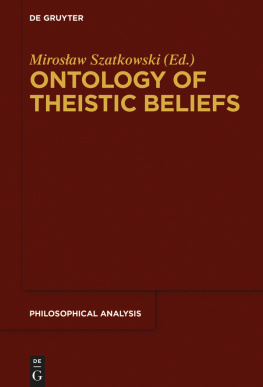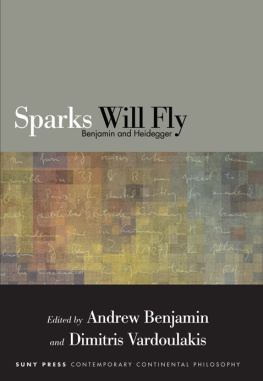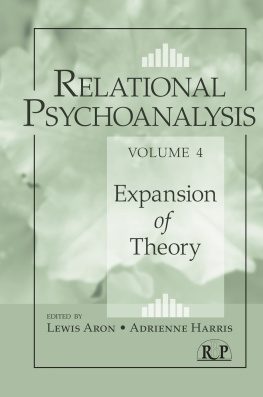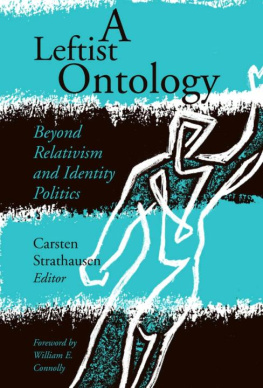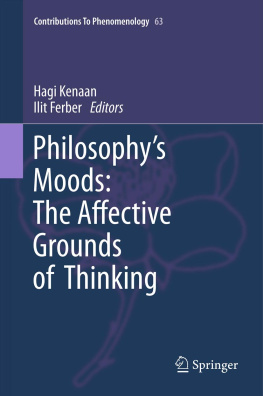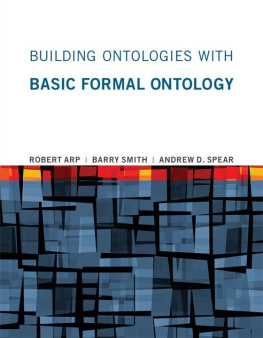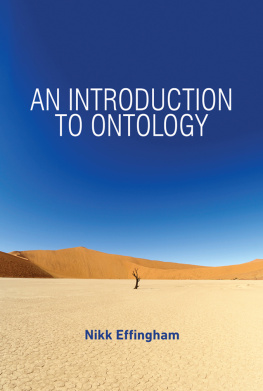Benjamin - Towards a relational ontology: philosophys other possibility
Here you can read online Benjamin - Towards a relational ontology: philosophys other possibility full text of the book (entire story) in english for free. Download pdf and epub, get meaning, cover and reviews about this ebook. City: Albany, NY, year: 2015, publisher: State University of New York Press, genre: Religion. Description of the work, (preface) as well as reviews are available. Best literature library LitArk.com created for fans of good reading and offers a wide selection of genres:
Romance novel
Science fiction
Adventure
Detective
Science
History
Home and family
Prose
Art
Politics
Computer
Non-fiction
Religion
Business
Children
Humor
Choose a favorite category and find really read worthwhile books. Enjoy immersion in the world of imagination, feel the emotions of the characters or learn something new for yourself, make an fascinating discovery.
Towards a relational ontology: philosophys other possibility: summary, description and annotation
We offer to read an annotation, description, summary or preface (depends on what the author of the book "Towards a relational ontology: philosophys other possibility" wrote himself). If you haven't found the necessary information about the book — write in the comments, we will try to find it.
Towards a relational ontology: philosophys other possibility — read online for free the complete book (whole text) full work
Below is the text of the book, divided by pages. System saving the place of the last page read, allows you to conveniently read the book "Towards a relational ontology: philosophys other possibility" online for free, without having to search again every time where you left off. Put a bookmark, and you can go to the page where you finished reading at any time.
Font size:
Interval:
Bookmark:

Towards a Relational Ontology
SUNY series in Contemporary Continental Philosophy
Dennis J. Schmidt, editor
Towards a Relational Ontology
Philosophys Other Possibility
ANDREW BENJAMIN

Published by State University of New York Press, Albany
2015 State University of New York
All rights reserved
Printed in the United States of America
No part of this book may be used or reproduced in any manner whatsoever without written permission. No part of this book may be stored in a retrieval system or transmitted in any form or by any means including electronic, electrostatic, magnetic tape, mechanical, photocopying, recording, or otherwise without the prior permission in writing of the publisher.
For information, contact State University of New York Press, Albany, NY
www.sunypress.edu
Production, Eileen Nizer
Marketing, Kate R. Seburyamo
Library of Congress Cataloging-in-Publication Data
Benjamin, Andrew E.
Towards a relational ontology : philosophys other possibility / Andrew Benjamin.
pages cm. (SUNY series in contemporary continental philosophy)
Includes bibliographical references and index.
ISBN 978-1-4384-5633-1 (hardcover : alk. paper)
ISBN 978-1-4384-5635-5 (ebook)
1. Ontology. 2. Relation (Philosophy) I. Title.
| BD311.B456 2015 111dc23 | 2014026034 |
10 9 8 7 6 5 4 3 2 1
Contents
Being-in-Relation
W hat is a relation? What are relations? The project of developing an understanding of being-in-relation starts with the supposition that the limit of the first question is established by the inevitability of the secondan inevitability to be encountered and then recovered. In other words, the second question opens up an importantly different proposition. The difference is clear. What the second question holds open is the possibility that the truth of relationality brings a form of plurality into play, and therefore what is true of relationality, correspondingly, could not be given by any one form of singularity in which that singularity would have been taken as primary. Were singularity to precede relationality, then the truth of relationality would have already been provided. Its truth would be found in the coming into relation of two founding singularities. While the positing of a founding form of singularity exerts a pervasive hold on philosophy, it contains a dimensionwhat will emerge as an ineliminable dimensionthat remains unthought within it. What is yet to be thought is the possibility that plural relations are original and therefore that both singularity and relations between singularities are always secondary. In other words, the opening question has been attributed an automatic viability. However, there were two opening questions. The force of the second is that it brings another project into play. What was initially unthoughtunthought despite being presentcomes to be thought in the move from the first to the second question.
Moving beyond the first question, therefore, or seeing that question merely as a step toward the second, is to allow the second question to open up the position that both informs and structures this entire project, namely, the proposition that the truth of relationality inheres in what is always at work within relations, namely, the effective presence of a founding and irreducible plurality. Within the structure of this general argument, singular relations, which can be more accurately described as pragmatic occurrences within relationality, can only ever be secondary (and this is the case despite the possibility of attributing a form of originality to them). Such occurrences always depend upon the presence of an original form of multiplicity or plurality (even if the presence of the latter is not affirmed). While an assertion of this nature may seem to be an imposition on the philosophical, the contention structuring this project is that this is not the case. Indeed, the overriding position advanced throughout the varying engagements with texts and figures from the history of philosophy that form the basis of this book is that relationality is always primary and that it continues to appear in this way. Moreover, what is fundamental to the argument developed in the course of this project is that relationality has always been there as a possibility. Relationality is not a lost possibility to be viewed nostalgically. It can be recovered. And yet the argument goes further. Not only can relationality be recovered from within the context of this overall argument, but relationality also is there as philosophys other possibility.
The contention at work here is that relationality has an original presence. At times it has what might be described as an almost archaic presence. Nonetheless, the presence of relationality, no matter how the presence of a founding form of relationality is understood, is often excised or effaced in the name of a posited founding singularity (to which it should be added that it is a singularity that can only ever be posited as founding.) The feint of original singularity, or more accurately the latters emergence as a feint, is part of this process. That such a singularity is posited and thus only ever there, and therefore only ever present as an after-effect, is a central aspect of the general argument. It should be added here that the presence of this conception of the after-effect when recognized as such, that is, when recognized as coming after rather than as actually originalneeds to be taken as attesting to the primacy of relationality. It is important therefore to deploy the word after-effect as part of a rethinking of relationality.
The founding singularity, given that it emerges as a putative possibility, will only ever have occurred after the event. The event in question is what is called henceforth a constituting plural event. As a result, the plural event then becomes one of the names for the quality of this founding form founding, is the excision of a founding event of plurality. Within such a context, namely, the context in which singularity is asserted as an end in itself, the plural event, while it remains the condition for singularity, can always be excised. To the extent that this excision takes place, the plural event remains unthought. To reiterate one of the positions with which this project began, it needs to be emphasized that the recognition of the failure to think both plurality and thus the primacy of relationality is equally, it can be argued, the recognition of that plurality as having a constituting and therefore founding presence. This position, the effacing of relationality, where effacing has a form of actuality, has continually and importantly different formulations in the texts to be considered in the course of this study. Fundamental to the position to be developed both here and in the chapters to come is that neither the means of excision nor the presence of relationality has a generalized and generalizable presence.
At this stage, what needs to be developed is the doubling within relationality insofar as the plural event as a site of original relationality is that which allows for the singular. A beginning can be made with the recognition of this doubling. While the position to be worked out will become increasingly more complex, and complexity here pertains to the detail of specific philosophical projects rather than the position itself, it is important to begin with this doubling. In the first place, there are forms of relationality that have an original quality. These forms are described henceforth as having anoriginal presence. The term anoriginal is used here to underscore a doubled presence at the origin and therefore a locus of irreducibility. Again, this doubling is an ontological claim rather than one determined by semantic concerns.always be an interpretive plurality. Again, the semantic is an effect of the ontological. With regard to the doubling under consideration, the implication of the secondary nature of the semantic has a twofold presence. In the first instance, the semantic has its conditions of possibility in this anoriginal relation. It is thus that this relation has a constitutive presence. The second is that within this doubling there is a movement in which a relation that had forms of original presencethat is, anoriginal relationalitymay come to be excised. And it should be remembered that what is always at stake is the anoriginal presence of modes of relationality, relations in the plural, whose excision occurs in the name of the singular. There is an important additional point that needs to be made here, namely, that this removal has to involve the invention, after the event, of an original form of singularity. The latter is, of course, the already noted positioning or positing of the originor the originalwhich has as its precondition the effacing of the anoriginal. There is a form of necessity at work here.
Font size:
Interval:
Bookmark:
Similar books «Towards a relational ontology: philosophys other possibility»
Look at similar books to Towards a relational ontology: philosophys other possibility. We have selected literature similar in name and meaning in the hope of providing readers with more options to find new, interesting, not yet read works.
Discussion, reviews of the book Towards a relational ontology: philosophys other possibility and just readers' own opinions. Leave your comments, write what you think about the work, its meaning or the main characters. Specify what exactly you liked and what you didn't like, and why you think so.

